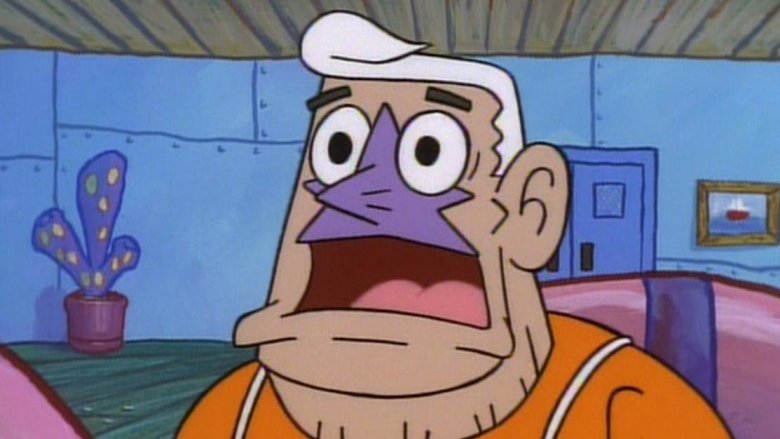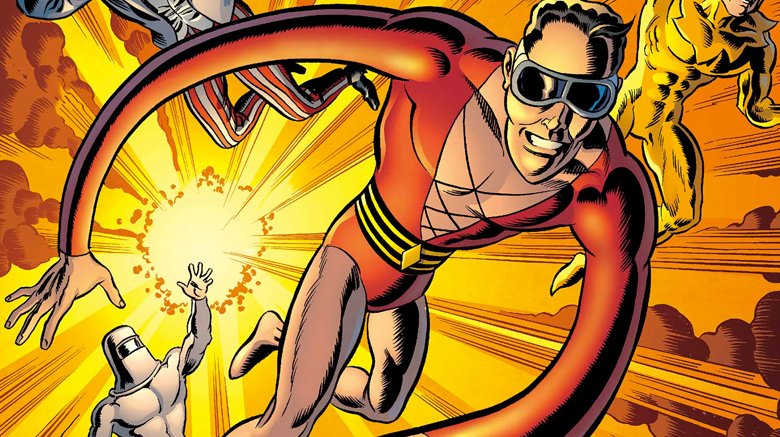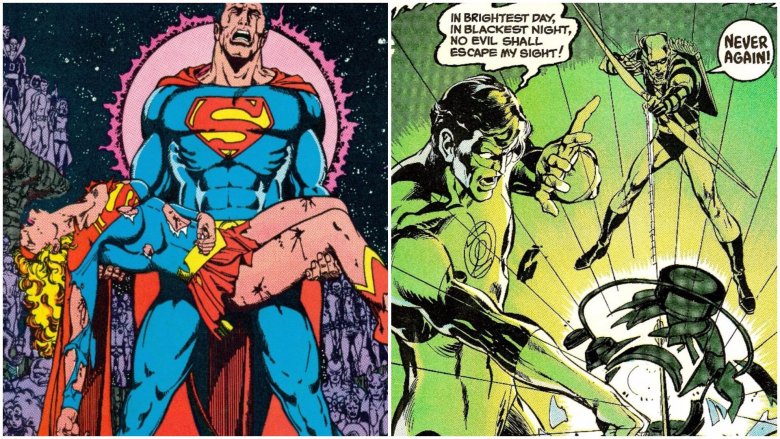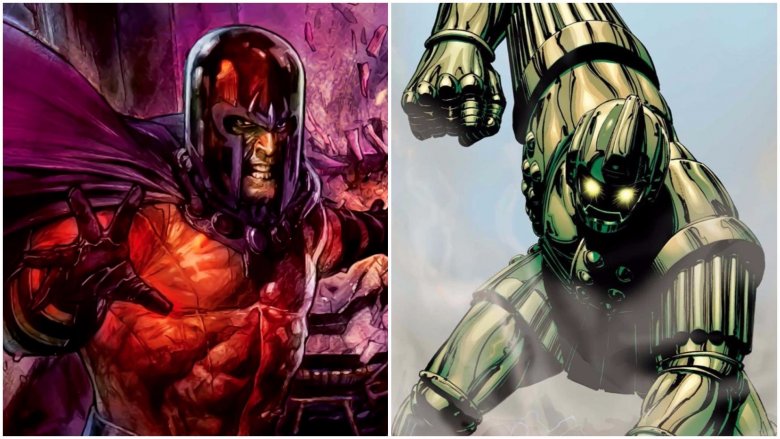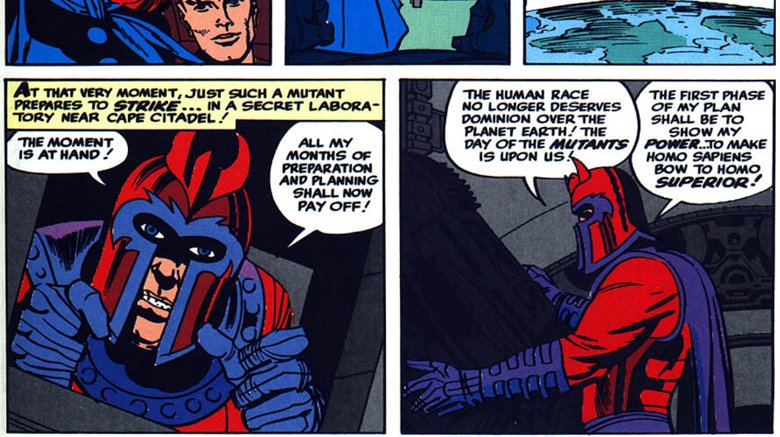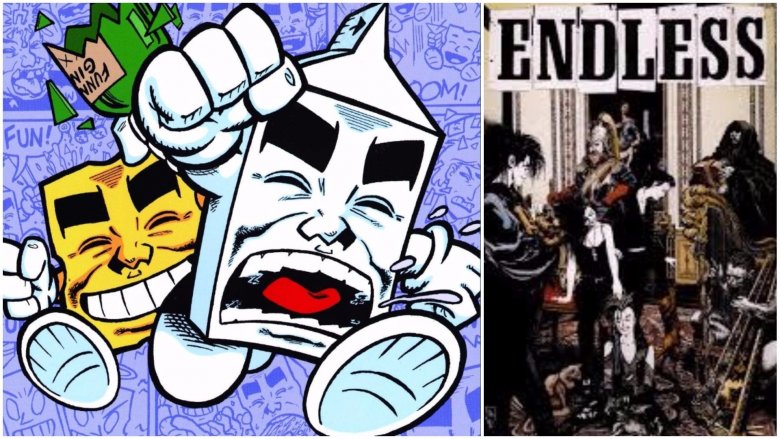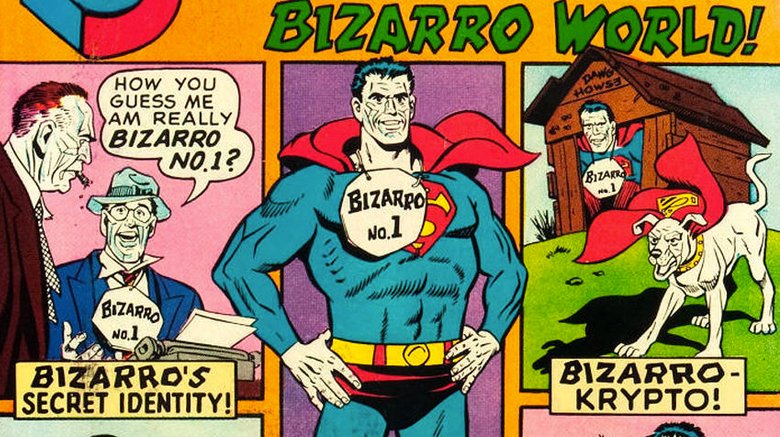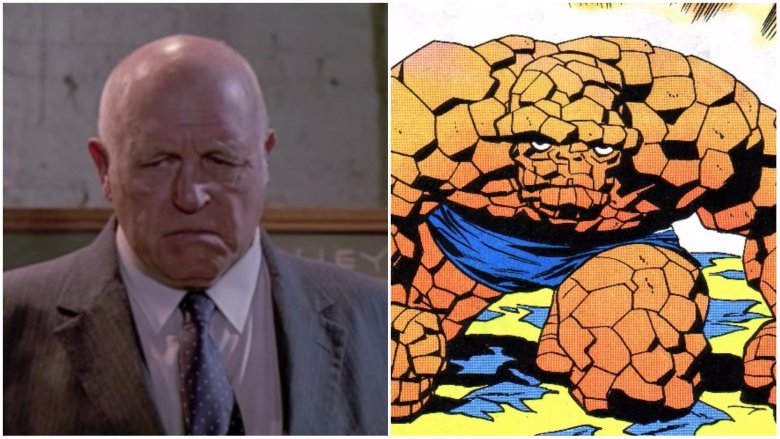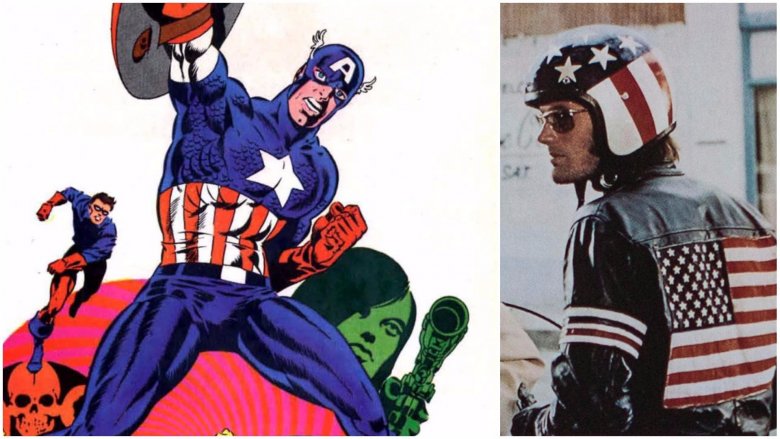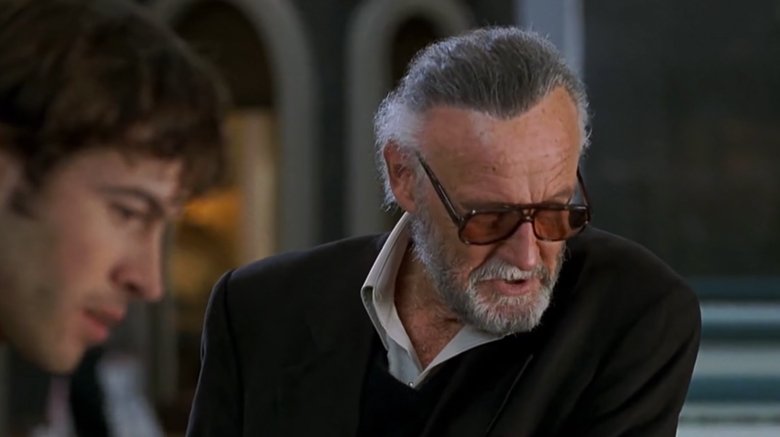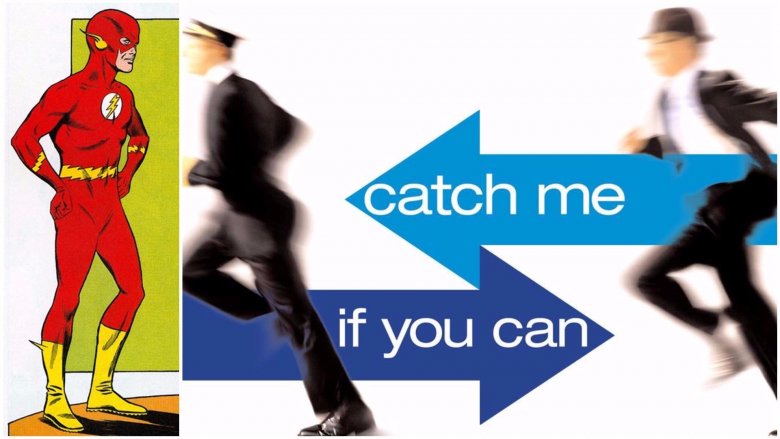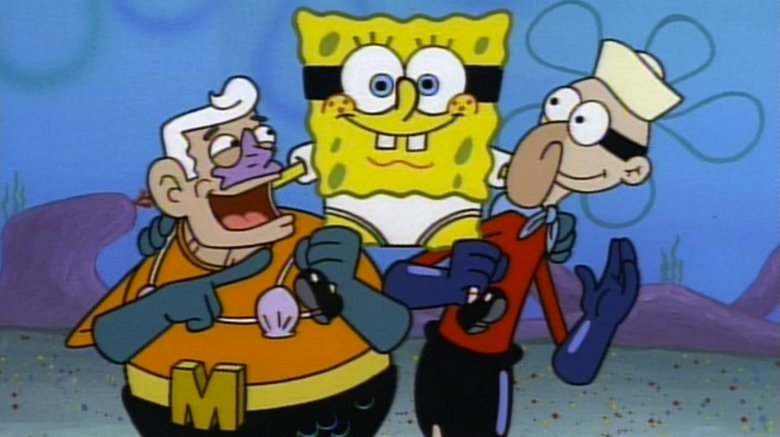Comic Book References In Pop Culture Only True Fans Noticed
These days, superheroes and references to comic books really are everywhere. They've become so much a part of mainstream culture in the last decade that nobody gets picked on for recognizing them anymore (not that anyone should have in the first place).
But prior to 2010 or so, only a select group of people were really engaged with comic books and the characters in them. So when comic book and superhero references appeared in pop culture, it was always exciting to those of us who recognized them and got to feel included—and we've rounded up a handful of the most memorable examples.
50 Cent raps about Plastic Man
In "Stretch," off of the album Before I Self Destruct, 50 Cent is bragging, as he so often does, about his prowess as a drug dealer. The title refers to cutting drugs with other substances to make more money off of a limited supply, but in the hook of the song, he takes the stretching metaphor further:
I got it mastered, man
in the hood I'm like Plastic Man.
Stretch, Fantastic Man
I make the money come faster, man
If you're a DC Comics fan, you'll remember Plastic Man as the very first stretchy superhero, created by Jack Cole way back in the 1940s. He's also one of the first superheroes to start out as a criminal, which 50 Cent isn't directly referencing, but it seems relevant. The next line refers to "Fantastic Man," which is probably a reference to Mr. Fantastic, another stretching hero, but if 50 got his name right, it wouldn't rhyme with Plastic Man.
This is representative of a great many references to superhero comics throughout rap music. Ghostface Killah, for example, has been rapping about Iron Man since long before Robert Downey Jr. came around, and MF DOOM has built a whole career by styling himself after Mr. Fantastic's arch-nemesis, Doctor Doom.
Alternate Universe comics on Fringe
During the final episodes of the Fox show Fringe's second season, the characters find themselves on an alternate Earth where everything is a little different, like Eric Stoltz starring in Back to the Future instead of being replaced by Michael J. Fox. During the season finale, Peter goes into an apartment with the alternate version of Olivia, where there are framed comic books hanging on a wall. Upon examination, they're all alternate versions of iconic DC covers.
For example, Crisis on Infinite Earths #7 is there, but Supergirl is holding Superman's dead body instead of vice versa. There's a Red Lantern and Red Arrow cover that mirrors the green version we're used to. There versions of of The Dark Knight Returns and Death of Superman, but the heroes have switched stories. There's also a cover of 1987's Justice League #1, in which the surly Green Lantern, Guy Gardner, has been replaced by the surly cowboy, Jonah Hex. The covers are a background detail that has nothing to do with the larger story, but they make a nice Easter egg that will give any comics fan a strong impression of just how different this world is.
Paul McCartney sings about Marvel supervillains
"Magneto and Titanium Man" is a 1975 song by Paul McCartney and Wings, off their album, Venus and Mars. The lyrics tell a story about being unsure if a romantic partner is trustworthy, but the common theme is made whimsical as McCartney describes a trio of Silver Age Marvel supervillains, the two from the title plus Crimson Dynamo, telling him that his girlfriend is involved in their plans for a robbery. In the end, McCartney realizes that he should trust his girlfriend more than he trusts three weirdos in goofy helmets, no matter what they tell him.
Titanium Man and Crimson Dynamo are both Iron Man villains created by Stan Lee and Don Heck, while Magneto of course is the X-Men's greatest foe, created by Lee and Jack Kirby. At the time of this song, none of them were household names, although Magneto could be considered one today. Both of the Iron Man villains are Russians connected to the Cold War, which makes them less relevant today. The original Crimson Dynamo, Ivan Vanko, was adapted into a character played by Mickey Rourke in Iron Man 2, but that version becomes Whiplash instead of the Dynamo.
David Bowie sides with Magneto
McCartney wasn't the first rock star to reference Magneto, but David Bowie was a lot more subtle about it. The lyrics of "Oh You Pretty Things," from his 1971 album Hunky Dory, read like the X-Men villain might have co-written them. They describe an advanced race coming to supplant humanity as we know it. There are hints of an alien invasion, but that idea is contradicted by the third verse, which basically describes the Marvel Comics concept of mutants:
Look at your children
See their faces in golden rays
Don't kid yourself they belong to you
They're the start of a coming race
And then the chorus ends with a line that's pretty close to an exact quote by Magneto: "You gotta make way for the Homo Superior." As far back as X-Men #1, Magneto uses the phrase "Homo Superior" to describe the mutant race, who are seen as the next step in human evolution. The name has been used in other sci-fi contexts as well, but it's been established that Bowie was a Marvel Comics fan in the 1960s, so it's likely that he originally heard it from Magneto, who believed that it was the destiny of Homo Superior to subjugate Homo Sapiens, a.k.a. regular humans.
Darlene and David love comics on Roseanne
Darlene Conner (Sara Gilbert), the middle child on ABC's popular sitcom Roseanne, grew into a bright but very strange teenager. Her on-again/off-again boyfriend, David Healy (Johnny Galecki), was a similar sort of misfit. So even though it was rarely discussed in dialogue, it made a lot of sense for both of them to be into comic books. And not just mainstream comics, but some of the indie and adult-oriented comics of the 1990s.
So while David was seen in a Death of Superman T-shirt, he also wore a T-shirt featuring Evan Dorkin's Milk & Cheese, a pair of irreverent comedy characters who were well known among indie comics fans. Darlene's bedroom always featured comic book posters as well, most memorably a Sandman poster with art by co-creator Mike Dringenberg, featuring the entire Endless family of characters from the popular Neil Gaiman-written DC/Vertigo Comics series.
These touches may have something to do with the presence of famous comic book fan Joss Whedon, who worked on the show early in his career before going on to become a superstar with Buffy the Vampire Slayer, as well as eventually writing comics including Astonishing X-Men and directing the first two Avengers movies.
Superman and Bizarro on Seinfeld
Jerry Seinfeld is famously a huge Superman fan, and even appeared alongside the hero in advertisements for American Express. He so often referenced Superman and other DC Comics characters in his Seinfeld sitcom that there's a legend claiming every episode includes a Superman reference (sadly, it isn't true). He does talk about Superman a lot, though, and has a magnet and a statue of the character in his apartment.
The most famous Seinfeld Superman reference is the "Bizarro Jerry" episode, in which Elaine becomes friends with another ex-boyfriend, Kevin, who turns out to be Jerry's opposite, complete with a backwards version of his apartment and two friends who resemble George and Kramer. Interestingly, the episode came at a time when Bizarro wasn't a part of the Superman comics, and definitely contributed to reviving public awareness for Superman's backwards doppelgänger prior to his eventual return.
Fantastic Four in Reservoir Dogs
Quentin Tarantino's feature-length directorial debut, 1992's Reservoir Dogs, stars Tim Roth as an undercover cop infiltrating a gang of criminals. In a flashback, he's describing the gang to another cop, and he says "Do you remember the Fantastic Four?" He then describes crime boss Joe Cabot as looking exactly like the Thing. Cabot was played by Lawrence Tierney, who to be fair did look a bit like the monstrous Ben Grimm by that point in his long career. In another scene, Roth's character has a Silver Surfer poster in his apartment, implying that he's even more of a comic book nerd than his dialogue lets on.
These Fantastic Four references fit into Tarantino's love of referencing lowbrow pop culture in his movies, from Madonna songs to old TV shows to Fruit Brute cereal. There's even a scene during Kill Bill Vol. 2 in which Bill describes Clark Kent as Superman's critique on humanity—which isn't a very good take on Superman, despite how much people love to quote it.
Peter Fonda as Captain America in Easy Rider
Peter Fonda's character in the classic counterculture biker film Easy Rider is named Wyatt, but his nickname is Captain America. Whether the name or the flag-themed outfit came first, we never find out. But this Captain America, who's hiding a whole lot of drug money in his chopper's gas tank, makes for quite a contrast with the comic book version.
However, if you were reading Captain America comics in 1969 when Easy Rider came out, it would have made sense. And there's a decent chance you would have been, since Marvel comics were popular with young hippies and potheads in the 1960s. From the time he returned to comics in 1964, there's always been a theme of Captain America trying to find his place in a world that might have passed him by. The idea of a quest for the heart of America, a narrative central to the counterculture and to Easy Rider, was also a theme of Captain America comics. So even if Peter Fonda's Captain America has a very different moral compass from Steve Rogers, their ultimate goals aren't so different.
Stan Lee in Mallrats
Thanks to all the Marvel movies of the last decade, Stan Lee cameos are to be expected at least twice a year. But back in 1995, seeing him drop in for a surprise appearance was rare enough to be exciting to a Marvel Comics fan. Considering Mallrats director Kevin Smith is a comics fan himself, it must have been even more exciting to write a part for him and work with him on set.
Stan appears in Mallrats just long enough for a conversation with Brodie (Jason Lee) in which Stan talks about his lifelong heartbreak at letting his one true love get away while he was focused on comics. None of it's true, of course—Stan's been married to the same woman since 1947—but it serves its purpose for the plot, which turns out to have been intentional, because Stan was recruited to change Brodie's outlook by T.S. (Jeremy London). Stan explains that his speech about lost love was actually from a Spider-Man comic—which is also not true, but that's not the point.
The thing that's probably funniest for most comics fans, though, is that Brodie is meeting his hero, and can't stop asking him about the sex lives of various Marvel characters. It's crass, which makes it right at home in a Kevin Smith movie, but it's also a line of thinking familiar to everyone who was ever a 13-year-old Marvel fan.
The Flash plays a key role in Catch Me If You Can
Steven Spielberg's Catch Me If You Can stars Leonardo DiCaprio as Frank Abagnale, a young con artist who evades a tenacious FBI agent played by Tom Hanks. The movie's set in the early 1960s, so it makes sense that Abagnale, a teenager at the time, is shown as a fan of the Silver Age Flash comics. Obviously the super-speedster resonates with Abagnale's sense of himself as someone who's always one step ahead and ready to make his escape.
Being a con artist often necessitates coming up with fake names on the fly, so it's a nice touch that one of Abagnale's aliases is Barry Allen, who was the secret identity of the Flash in the 1960s—and is again today, although when Catch Me If You Can came out, the Flash was Wally West, and had been for more than 15 years. The name Barry Allen would have been recognized by fewer casual fans in 2002 than before or since, but dedicated DC devotees knew immediately what was up when he was mentioned.
Spongebob Squarepants parodies Aquaman
Mermaid Man and Barnacle Boy were the favorite superheroes of Spongebob Squarepants and his best friend Patrick. They appear on Spongebob's TV in their prime, as stereotypical muscular heroes, but when they show up in the present, it's as decrepit and senile old men.
It doesn't take a detective to catch on that Mermaid Man is a parody of Aquaman, and if you remember those old 1960s cartoons, you probably also recognize Barnacle Boy's resemblance to Aqualad. But the more familiar you are with DC Comics, the more you realize just how closely these guys resemble the source material.
First of all, the costumes are surprisingly exact. Just like Aquaman, Mermaid Man wears an orange shirt, green gloves and tights, and black trunks with a yellow belt featuring the first letter of his name. But since he's part mermaid, he always wears a clamshell bikini top, as well as a starfish mask over his face. Barnacle Boy is similarly recognizable, with the same red and blue color scheme and bare legs as Aqualad, but with the trappings of a sailor—presumably in reference to Barnacle Bill the Sailor. Mermaid Man even has a manta ray-themed nemesis, Man Ray, not unlike Aquaman's Black Manta.
